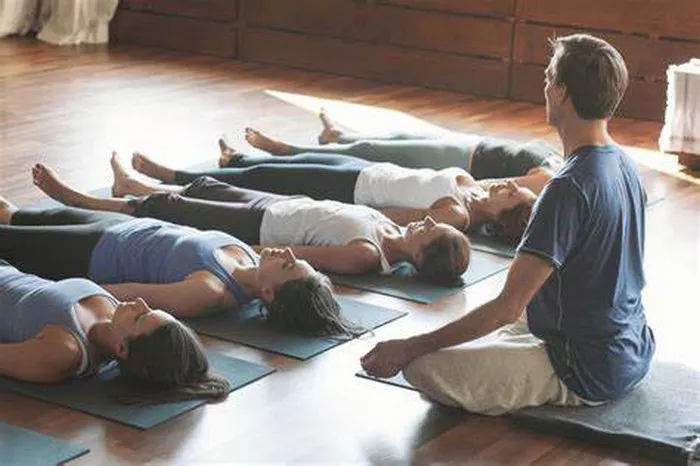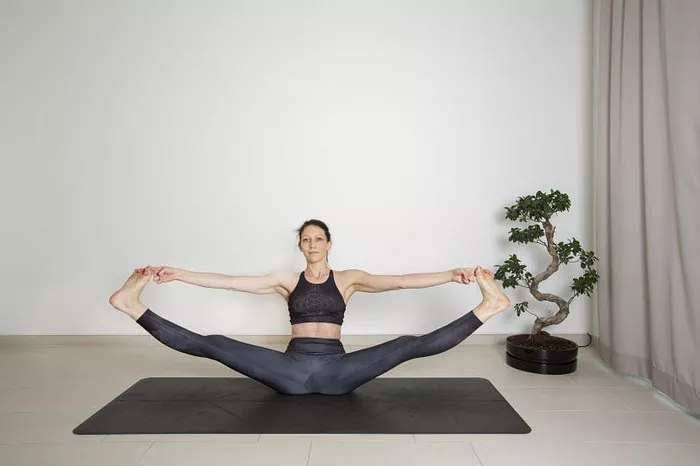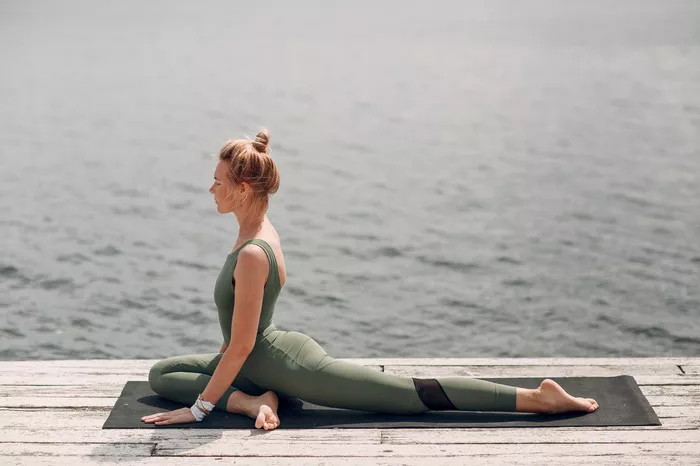The Fish Pose, or Matsyasana, is a classical yoga posture known for its wide-ranging physical, mental, and emotional benefits. As one of the more advanced poses in the Hatha yoga tradition, it may seem intimidating to beginners, but with proper guidance and regular practice, Matsyasana can become an integral part of any yoga routine. In this article, we will explore what the Fish Pose is, how to practice it, and most importantly, the numerous benefits it offers to the body and mind.
Understanding the Fish Pose (Matsyasana)
The name “Matsyasana” is derived from the Sanskrit words “Matsya” (fish) and “Asana” (pose), translating directly to “Fish Pose.” In this asana, the body forms a gentle arch, resembling the shape of a fish. The pose stretches the entire front of the body, while opening up the chest and throat, making it an excellent counter-pose to many forward-bending postures. The Fish Pose is often used as a counter to the Shoulder Stand (Sarvangasana) and Plow Pose (Halasana), as it provides a release to the neck, spine, and chest after these more intense inversions.
Step-by-Step Guide to Performing Matsyasana
For those who are unfamiliar with the Fish Pose, here’s a detailed breakdown of how to practice it:
Starting Position: Begin by sitting comfortably on your mat in a cross-legged position or Sukhasana (easy pose). Ensure that your spine is erect and your shoulders are relaxed.
Preparing the Body: Place your hands underneath your thighs, palms pressing against the floor. Engage your core muscles and lengthen the spine, while keeping your head neutral and aligned with the rest of your body.
Reclining Back: Slowly recline your torso back, lifting your chest and arching your back. Keep your elbows bent and firmly press your forearms into the floor for support.
Positioning the Legs: Keep your legs extended in front of you, with the soles of your feet pointing upward. For a deeper stretch, you can either keep your legs straight or bend them slightly at the knees. However, for beginners, it’s recommended to keep them straight, as it is safer and more comfortable.
Opening the Chest: As you recline further back, arch your back, allowing the crown of your head to lightly touch the floor (or, if your flexibility allows, rest your head gently on the floor). At the same time, push your chest upwards, drawing the shoulder blades closer together to fully open the chest.
Breathing: Take deep and steady breaths while maintaining this posture. Keep your focus on the breath and the sensations in the body.
Finishing the Pose: To release the Fish Pose, slowly bring your chin towards your chest and gently lower your torso back to the floor. Bring your legs together and relax in a lying position, letting your body soften.
Benefits of the Fish Pose
Matsyasana provides a wide variety of benefits that affect both the physical and mental aspects of well-being. Below, we will explore the key benefits of this powerful yoga pose.
1. Stretches the Spine
One of the most prominent physical benefits of the Fish Pose is its ability to stretch the entire length of the spine. In the pose, the back is arched, which helps release tension in the vertebrae and improves flexibility. By regularly practicing Matsyasana, you can increase spinal mobility, which helps improve posture and reduce back pain caused by sitting for long periods. This is particularly beneficial for individuals who suffer from stiffness or discomfort in the lower back.
2. Opens the Chest and Shoulders
Matsyasana is an excellent way to open up the chest, which can become constricted from poor posture or stress. The stretch in the chest and the act of pulling the shoulder blades together releases tightness in the pectoral muscles. Over time, this can improve posture, increase lung capacity, and promote deeper, more effective breathing.
This chest-opening effect is particularly beneficial for those who spend a lot of time hunched over desks, computers, or mobile phones. It counteracts the rounding of the shoulders and promotes a more upright posture. In addition, individuals suffering from tight shoulders or neck stiffness can find relief in the Fish Pose.
3. Stimulates the Heart Chakra
The Fish Pose is often associated with stimulating the heart chakra (Anahata), which is located in the center of the chest. When the chest is opened in this pose, it can help release emotional blockages and bring balance to the energy of the heart chakra. This has an emotional benefit, fostering feelings of compassion, love, and emotional healing. In yoga and energy work, the heart chakra is seen as the center of emotional and relational health, and its activation through Matsyasana can promote emotional well-being.
4. Improves Respiratory Health
The Fish Pose stretches and opens up the respiratory system, allowing for deeper inhalation and exhalation. By lifting the chest and expanding the rib cage, the lungs have more room to fully expand, which improves overall lung capacity and the efficiency of the respiratory system. This can be especially beneficial for individuals with asthma, bronchitis, or other respiratory conditions.
Additionally, the deep breathing practiced in Matsyasana can help clear blockages in the lungs, relieve tension in the diaphragm, and improve the flow of oxygen throughout the body. This makes the Fish Pose an excellent way to promote better breathing habits and boost energy levels.
5. Relieves Tension in the Neck and Shoulders
Matsyasana can be an effective remedy for relieving neck and shoulder tension, which often arises from stress or poor posture. When practiced correctly, the Fish Pose opens up the throat area and allows for the release of tightness in the neck and upper back. This helps reduce discomfort in the cervical spine and can relieve the pressure caused by holding tension in these areas.
It also relieves the tightness that many individuals feel after spending long hours working on computers or mobile devices. The deep stretch of the upper body releases built-up tension, helping to soothe and relax the muscles.
6. Improves Posture
As Matsyasana stretches the spine, chest, and shoulders, it can help promote better posture. Many people suffer from a condition known as “forward head posture,” where the head juts forward and the shoulders round forward due to habits like slouching or sitting for long periods. The Fish Pose counters this misalignment by promoting openness in the chest and lengthening the spine. With consistent practice, Matsyasana can help correct postural imbalances and align the body for more natural, comfortable movement.
7. Stimulates the Abdominal Organs
The Fish Pose gently compresses the abdominal organs as the chest is lifted and the back arches. This compression stimulates the digestive system, encouraging improved digestion and regularity. The pose can also help tone the abdominal muscles, making it beneficial for those seeking to improve core strength.
In addition to aiding digestion, Matsyasana helps in detoxification by stimulating the flow of lymphatic fluid and encouraging the elimination of toxins from the body. This is important for overall health and well-being.
8. Calms the Mind and Reduces Stress
On a mental and emotional level, Matsyasana has a calming effect. The gentle stretch and chest-opening nature of the pose promote a sense of relaxation and well-being. This posture encourages mindfulness and can help reduce feelings of anxiety, stress, and tension. When practiced with conscious breathing, the Fish Pose fosters deep relaxation, making it an excellent addition to a stress-reducing yoga practice.
By helping to release emotional tension stored in the chest and shoulders, Matsyasana supports mental clarity and emotional resilience. It can also enhance focus, leading to a calm, centered mind.
9. Supports Hormonal Balance
Matsyasana is beneficial for the endocrine system, helping to balance hormone production in the body. The gentle stretch of the neck and throat area stimulates the thyroid and parathyroid glands, which regulate important bodily functions such as metabolism, growth, and calcium balance. By practicing the Fish Pose, you can enhance the functioning of these glands, supporting overall hormonal health.
10. Enhances Flexibility
The Fish Pose promotes flexibility in the spine, neck, and chest. Over time, practicing this pose can improve your flexibility in these areas, which is essential for maintaining good physical health and preventing injuries. Increased spinal flexibility also aids in better posture and the ability to perform other yoga poses with greater ease.
Safety Considerations
Although Matsyasana offers numerous benefits, it is important to approach this pose with care, especially for individuals with certain health conditions. Some precautions to keep in mind include:
Neck Issues: If you have neck pain or any cervical spine issues, avoid allowing the head to touch the floor. Instead, keep the head lifted slightly or rest on a block for additional support.
Back Injuries: If you have a history of back problems, be mindful of the depth of the backbend in this pose. Focus on engaging your core and avoid over-arching your back.
Heart Conditions: Individuals with heart conditions should consult with a doctor before attempting the Fish Pose, as it may place additional pressure on the chest and cardiovascular system.
Conclusion
The Fish Pose (Matsyasana) is a powerful yoga posture with numerous physical, mental, and emotional benefits. From improving spinal flexibility and posture to stimulating the respiratory system and heart chakra, this asana offers a holistic approach to enhancing overall well-being. While it may require some practice and patience, the rewards of regular Matsyasana practice are vast, including improved flexibility, a sense of calm, and better physical alignment. Incorporating the Fish Pose into your yoga practice can help bring balance and harmony to both your body and mind, making it a valuable addition to any yoga routine.
Related topics

























